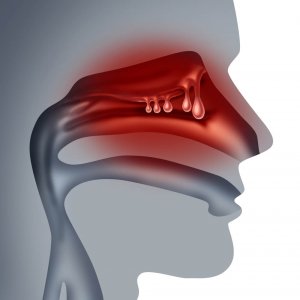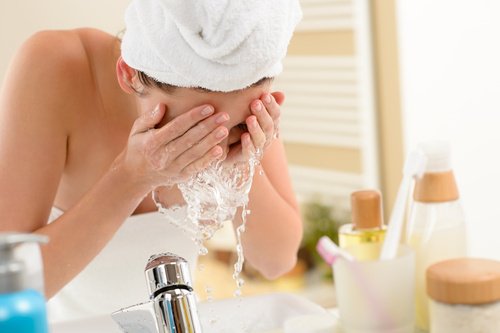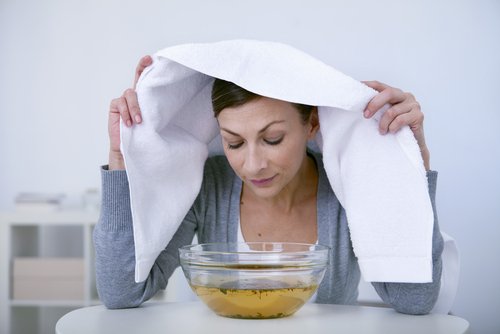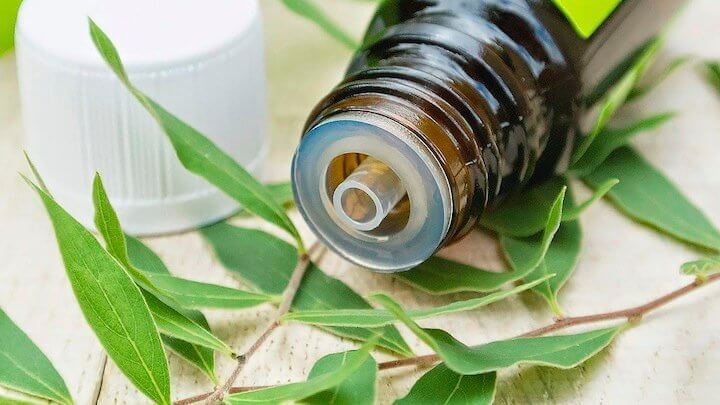How to Treat Nasal Polyps Naturally

Chronic allergies, respiratory infections, and certain nasal infections can cause conditions like nasal polyps. Usually, treatment involves corticosteroids or surgery, but sometimes natural remedies are enough.
Read on for 5 ways to treat nasal polyps naturally.
What are nasal polyps?
Nasal polyps are liquid-filled protuberances that grow in the paranasal sinuses and nasal passages. They look like tiny grapes in your nostrils. They’re generally painless, but they can be bothersome if you also have allergies.
They vary in size. Therefore, while they’re not a big problem for some people, they will need to be removed via surgery in other cases. That’s one reason you should address nasal polyps in a timely manner.

Generally speaking, nasal polyps grow in the paranasal sinuses and press on them. Hence, they’re considered a variety of sinusitis, also known as polypoid sinusitis.
Recommended reading: 7 Tricks to Get Rid of Sinusitis
Causes of nasal polyps
There are no definitive causes identified for nasal polyps. However, studies show that the following are most likely:
- Severe, improperly treated allergies
- Asthma
- Long-lasting illnesses
- Chronic inflammation of nasal mucous membrane
- Problems with blood vessels in charge of carrying blood to the mucous membrane
- Anatomical abnormalities causing pressure in the sinuses
- Aspirin sensitivity
- Cystic fibrosis
- Allergic rhinitis
Symptoms and treatment of nasal polyps
When they’re small, there are usually no symptoms; in fact many people are unaware that they have them. However, as they grow, they may lead to obstructions and infections in the nasal passages. Then, when the person’s nostrils are blocked, they begin to breathe through their mouth.
Common symptoms include:
- Nasal congestion, possible runny nose
- Mild or moderate loss of sense of smell
- Mild of moderate loss of sense of taste
- Headache
- Pain and pressure in the face and nasal area
- Cold symptoms
- Snoring
As for treatment, doctors may recommend injections and/or surgery. Surgery, though, is only appropriate for total obstruction of one or both nostrils and when other treatments are not working.
Before turning to surgery to remove the nasal polyps, you may want to try other methods. Certain natural remedies can reduce their size or keep them from growing.
Here are five of them:
5 natural solutions for nasal polyps
Natural remedies are often budget-friendly and easy to prepare. Plus, they’re often effective in the treatment of a wide variety of illnesses and conditions.
1. Saline solution – nasal rinse

- Mix 1 teaspoon of sea salt (5 g) with 1 cup (200 ml) of hot water.
- With a dropper or nasal sprayer, apply directly to your nostrils, inhaling to spread the liquid throughout your nasal cavity.
- Use three times a day.
2. Radish honey syrup
Radishes are root vegetables known for their ability to help treat respiratory conditions. A lot of people are afraid of them and their very strong, spicy flavor. This remedy, though, mixes them with honey to make them go down easier.

- Mix a handful (200 g) of grated radish with a cup (1 cup) of honey.
- Take a tablespoon of the mixture in the morning and at night until it’s all gone.
Note: It’s best to let the radish fill your mouth with its powerful, spicy smell before swallowing.
3. Vitamin C

Eating citrus fruits like oranges, grapefruits, and lemons will strengthen your immune system because of their high vitamin C content. This is why we recommend them if you have nasal polyps. They also contain bioflavonoids, which are good for the mucous membrane in your nose as well as your blood vessels.
- Eat one or two pieces of citrus fruit per day, preferably whole, although citrus fruit juice (when low in sugar) is acceptable as well.
4. Inhaling steam

Inhaling steam is a widely used method for reducing nasal congestion and breaking up mucous. There are multiple ways to do it, but the ingredients are always the same: water and herbs.
- Boil water in a pot along with mint or eucalyptus leaves.
- Pour into a large bowl.
- Drape a towel over your head and neck and lean over the bowl. Make sure the towel doesn’t let any steam escape.
- Inhale deeply through your nose and continue until the water cools off.
- Try to repeat every night for several nights in a row. It should help you sleep and reduce your nasal polyps.
Learn more: Learn to Make Your Own Homemade VapoRub
5. Tea tree oil

Since it’s antibacterial, antiviral, anti-fungal, anti-inflammatory and in general very healing, tea tree oil is an excellent home remedy for nasal polyps. We must emphasize that it should only be used topically (externally), and ideally diluted.
- Dip a Q-tip in a mixture of 1 cup of warm water (250 ml) with 5 drops of tea tree oil.
- Smooth the Q-tip over the nasal polyps, or in the nasal passages if you can’t reach the polyps.
- Alternatively, you can combine this method with the above by breathing in steam made from these ingredients.
If you try one of these natural remedies and don’t see much improvement in your nasal polyps, see a doctor to discuss other kinds of treatment. Natural medicine can be of great help, however, and many people see great improvement with it.
All cited sources were thoroughly reviewed by our team to ensure their quality, reliability, currency, and validity. The bibliography of this article was considered reliable and of academic or scientific accuracy.
-
Martín Mateos, A. J., & De Mier Morales, M. (2006). Poliposis nasal. FMC Formacion Medica Continuada En Atencion Primaria. https://doi.org/10.1016/S1134-2072(06)71399-8
-
Santos, O. R., Labrada, A., & Yedra, A. M. (2000). Rinitis y pólipos nasales. Su relación con ácaros domésticos. Revista Alergia Mexico.
-
Mullol, J. M. G. y J. (2007). ¿Cómo diagnosticar a un paciente con rinosinusitis crónica/poliposis nasal? Jano.
This text is provided for informational purposes only and does not replace consultation with a professional. If in doubt, consult your specialist.








